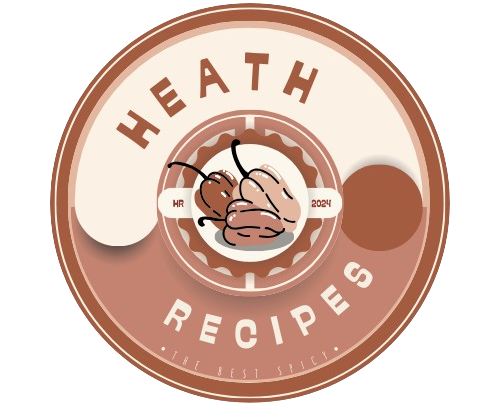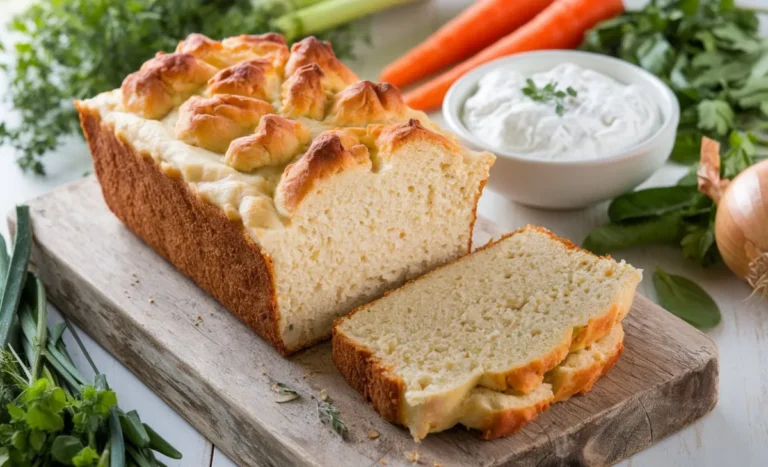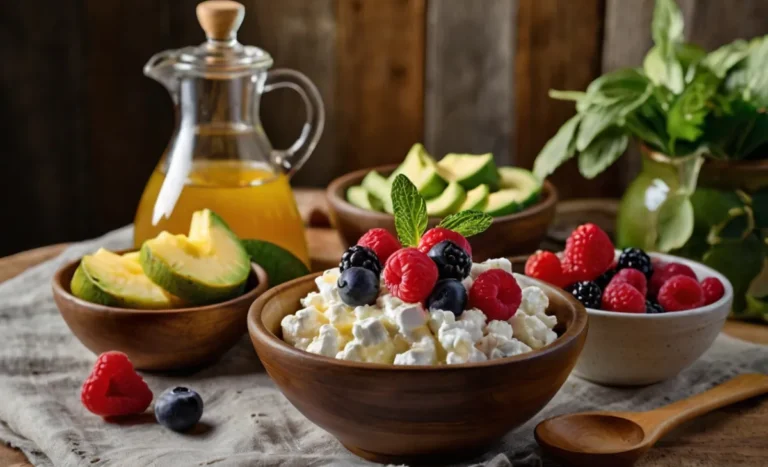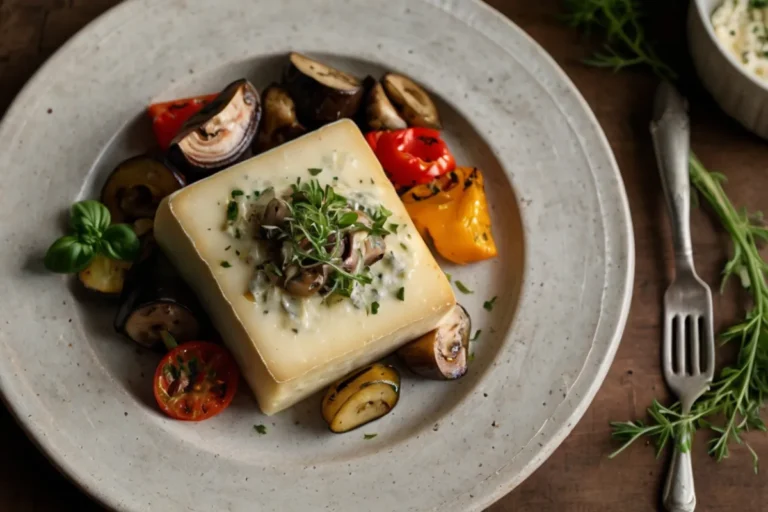How Can You Make Cheese: Exploring Different Methods and Techniques
Introduction to Cheese-Making: Understanding the Basics
Cheese-making is a timeless tradition that many home cooks and food enthusiasts enjoy. If you’re curious about how can you make cheese, understanding the basics is a great starting point. The process involves a few key ingredients and tools, but the art of cheese-making lies in mastering simple techniques. With the right knowledge, anyone can create delicious homemade cheese.
First, it’s essential to grasp the role of milk in cheese-making. Cheese is primarily made from milk, and different types of milk can produce various flavors and textures. Whether using cow’s, goat’s, or sheep’s milk, the key is to select fresh, high-quality milk. Once you have your milk, the next steps involve curdling it with rennet or acid, separating the curds, and pressing them into cheese.
Next, you’ll need to understand the importance of cultures in cheese-making. Bacteria cultures help develop the flavor and texture of the cheese during the fermentation process. Adding specific cultures depending on the type of cheese you’re making can significantly impact the final result. Patience is crucial here, as some cheeses take longer to ferment than others.
Finally, temperature control plays a significant role in achieving the perfect cheese. Keeping the milk at the right temperature during the cheese-making process ensures that the curds form properly. Using a thermometer and following the recommended guidelines for each cheese type will lead to better results. With practice and experimentation, you’ll discover how can you make cheese that’s both delicious and unique.
Traditional Cheese-Making Techniques: A Step-by-Step Guide
Learning how can you make cheese using traditional methods is both rewarding and fun. These techniques have been passed down for generations, providing an authentic approach to cheese-making. By following a step-by-step process, you can create flavorful and fresh cheese at home. With the right tools and ingredients, anyone can master the art of traditional cheese-making.
The first step in traditional cheese-making is preparing the milk. Begin by gently heating your milk to the required temperature, depending on the type of cheese you’re making. Using a thermometer is essential to ensure precision. Once the milk reaches the correct temperature, you can add rennet or an acid like lemon juice to help curdle the milk.
After the milk curdles, the next step is separating the curds from the whey. Using a slotted spoon or cheesecloth, scoop out the curds and place them in a mold or cheesecloth-lined colander. Press the curds to remove excess whey, which helps firm up the cheese. The amount of pressing time will vary based on the type of cheese you’re making.
Finally, the cheese needs to age or set, depending on your preference. Some cheeses require only a few hours to set, while others may need days or even months of aging. During this time, the flavors develop, and the texture becomes richer. By practicing these traditional methods, you’ll soon discover how can you make cheese that’s rich, flavorful, and authentic.
Exploring Different Types of Cheese: Soft, Semi-Hard, and Hard Varieties
When learning how can you make cheese, it’s important to explore the different types of cheese that you can create. Cheese varieties are generally categorized into three main types: soft, semi-hard, and hard. Each type has its unique characteristics, flavors, and textures, which make the cheese-making process exciting and diverse. Understanding these categories can help you choose the best cheese to make at home.
Soft cheeses are known for their creamy and delicate texture. Varieties like Brie, Camembert, and cream cheese are popular examples. These cheeses often require less aging and are perfect for beginners. The process involves less pressing and draining, which results in a higher moisture content. Soft cheeses are ideal for spreading and pair well with fresh fruits or bread.
Semi-hard cheeses offer a balance between moisture and firmness. Cheddar, Gouda, and Edam are great examples of this category. These cheeses require a moderate aging period and a firmer pressing technique. As a result, they develop richer flavors while maintaining a slightly soft interior. If you’re wondering how can you make cheese with a bit more complexity, semi-hard varieties are a good next step after mastering soft cheeses.
Hard cheeses, such as Parmesan and Pecorino, are aged for a longer period, resulting in a dense and crumbly texture. These cheeses are typically pressed and drained extensively to remove most of the moisture. The aging process deepens the flavors, making hard cheeses perfect for grating over dishes. While hard cheeses require patience, the rich taste is worth the wait, and they demonstrate the full potential of home cheese-making.
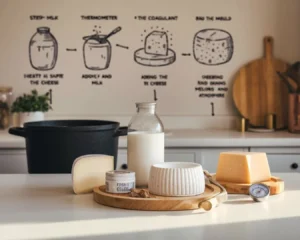
The Role of Milk in Cheese-Making: Selecting the Right Type
When exploring how can you make cheese, one of the most critical factors is choosing the right milk. Milk forms the foundation of all cheeses, and different types of milk can create various flavors and textures. Whether you are a beginner or an experienced cheese-maker, understanding the role of milk is essential to producing high-quality cheese. Selecting the best milk ensures the success of your cheese-making process.
Cow’s milk is the most common choice for cheese-making, offering a versatile base for various cheeses. From soft cheeses like ricotta to hard cheeses like cheddar, cow’s milk provides a mild flavor and smooth texture. It is widely available and easy to work with, making it a popular option for those new to cheese-making. When selecting cow’s milk, always opt for fresh, high-quality milk that hasn’t been ultra-pasteurized, as this process can affect curd formation.
Goat’s milk offers a distinct flavor and is perfect for cheeses like chèvre. This milk has smaller fat globules, resulting in a creamier texture and tangier taste. Goat’s milk is ideal for those who want to experiment with more unique flavors. Additionally, goat’s milk is easier to digest for some people, making it a popular alternative to cow’s milk. When learning how can you make cheese with goat’s milk, you’ll notice it produces softer curds and creates a delicate, creamy finish.
Sheep’s milk, although less common, is prized for its rich, buttery flavor. It contains a higher fat content, which makes it excellent for creating cheeses like Pecorino and Roquefort. Sheep’s milk also yields more cheese per gallon due to its high solids content. If you’re looking for a luxurious and flavorful cheese-making experience, sheep’s milk is a fantastic choice. Understanding the different characteristics of these milk types is key to deciding how can you make cheese that suits your taste preferences.
Common Tools and Equipment for Home Cheese-Making
When considering how can you make cheese at home, having the right tools and equipment is essential for success. While cheese-making may seem daunting, the right setup can simplify the process. With a few key items, you can transform simple ingredients into delicious cheese. Let’s explore the common tools every home cheese-maker should have.
First, a good quality thermometer is vital for monitoring the temperature of your milk. Cheese-making often requires precise temperature control, so an accurate thermometer helps ensure that the milk curdles properly. A digital thermometer is ideal for quick readings. Additionally, a large stainless steel pot is essential for heating the milk. This type of pot distributes heat evenly and is easy to clean.
Next, you’ll need a cheese mold for shaping your cheese. Molds come in various sizes and shapes, allowing you to create everything from small rounds to larger blocks. Many molds include drainage holes to help expel whey during the pressing process. Furthermore, a cheese press is useful for applying pressure to the curds, which helps form firmer cheeses. These tools help you achieve the desired texture and consistency in your final product.
Finally, cheesecloth and a slotted spoon are indispensable for separating curds from whey. Cheesecloth allows you to drain excess liquid while retaining the curds. A slotted spoon is perfect for gently lifting the curds from the pot. By having these common tools on hand, you’ll be well-equipped to tackle the question of how can you make cheese successfully. With practice and the right equipment, you’ll be creating homemade cheese in no time.
Advanced Cheese-Making Methods: Aging, Cultures, and Rennet
When exploring how can you make cheese at a more advanced level, understanding aging, cultures, and rennet is crucial. These elements significantly influence the flavor, texture, and overall quality of the cheese. As you progress in your cheese-making journey, mastering these methods will elevate your creations and allow for a wider variety of cheeses.
Aging, or affinage, plays a vital role in developing the complex flavors of cheese. During this process, cheese is stored in specific conditions that promote flavor development and texture changes. Factors such as temperature, humidity, and airflow must be carefully controlled. Different aging times can yield distinct flavors; for instance, a cheese aged for a few weeks may taste milder, while one aged for several months can develop a rich, robust character. This step is essential for producing many hard cheeses.
Cultures, which are specific strains of bacteria, are another critical aspect of advanced cheese-making. They help ferment the milk and contribute to the flavor and texture of the cheese. By selecting different cultures, you can create unique flavor profiles. For example, mesophilic cultures are commonly used for softer cheeses, while thermophilic cultures work well for harder varieties. Understanding how to use these cultures will help you achieve desired tastes and textures.
Finally, rennet is a key ingredient that helps curdle the milk, forming the curds and whey. It can be derived from animal, vegetable, or microbial sources, each providing distinct characteristics to the cheese. When learning how can you make cheese, it’s essential to choose the right type of rennet based on the cheese you’re creating. By mastering the use of rennet, cultures, and aging techniques, you’ll gain the skills necessary to produce a wide range of delicious cheeses that showcase your expertise.
Troubleshooting Cheese-Making Issues: Common Mistakes and Solutions
When learning how can you make cheese, encountering challenges is common. Even experienced cheese-makers face issues that can affect the quality of their cheese. Understanding these common mistakes and how to troubleshoot them can make all the difference in achieving a successful batch. With the right solutions, you can refine your skills and improve your cheese-making process.
One frequent problem is improper curd formation. If the curds do not form, it may be due to insufficient heat or incorrect amounts of rennet. To address this, ensure that you are using fresh, high-quality ingredients. Additionally, double-check the temperature of your milk during the curdling process. Maintaining the right temperature is crucial, as it promotes proper curd development. If you notice that your curds are too soft, consider increasing the rennet or allowing the mixture to sit longer.
Another common issue is excessive whey remaining in the curds, resulting in a grainy texture. This often happens when the curds are not pressed firmly enough or are not drained properly. To solve this, ensure you use adequate pressure during the pressing stage. Also, allow the curds to drain thoroughly before shaping them into molds. This step helps achieve a smoother and creamier texture in the final product.
Lastly, unwanted flavors can develop during aging if the environment is not controlled correctly. Factors such as humidity and temperature play a significant role in this process. To avoid off-flavors, invest in a cheese cave or aging container that allows you to monitor these conditions. If you encounter flavor issues, check your aging conditions and adjust them accordingly. By troubleshooting these common mistakes, you’ll gain confidence in your ability to answer the question of how can you make cheese successfully and deliciously.
How Can You Make Cheese at Home: A Step-by-Step Guide for Beginners
